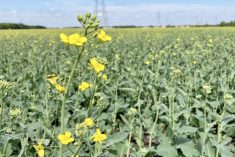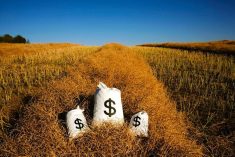CNS Canada — While some in the soybean sector think Statistics Canada is right about its predictions for a decline in Manitoba acres, others think plantings should still end up close to the record in 2017.
Statistics Canada is predicting soybean acres in Manitoba to drop to 1.96 million from 2.29 million, according to its principal field crop areas report released April 27. Overall across Western Canada, soybean area is predicted to fall to 2.485 million acres from 3.14 million.
“From what I’m seeing out there talking to growers… with the yields being a little lower and canola yields being stronger last year, that we would seed less soybean acres,” said Dennis Lange, pulse crop specialist with Manitoba Agriculture in Altona.
Read Also

Senft to step down as CEO of Seeds Canada
Barry Senft, the founding CEO of the five-year-old Seeds Canada organization is stepping down as of January 2026.
Francois Labelle, executive director of Manitoba Pulse and Soybean Growers, doesn’t think soybean acres will drop as much. Since Statistics Canada conducted its survey, market conditions have changed, making soybeans a more profitable crop.
Growers, he said, have “been seeing higher prices. A month or six weeks ago, we had a meeting and growers were talking about it that they were being offered $11 a bushel for new-crop and then the numbers reached as high as $12 a bushel.”
Soybean markets have been driven higher on production issues in the major soybean-growing region of Argentina. U.S. soybean exports have also dropped after becoming part of an ongoing trade disagreement between the U.S. and China.
According to Labelle, most soybean acres have already been planted in the east of the province, near the Red River Valley. Dry conditions have plagued the province of late and soybeans are a crop that needs moisture. However, Labelle said, the dry conditions aren’t scaring off Manitoba growers.
Soybeans, he said, “have been profitable for them for years, quite a few years, so (growers are) still interested in them. Being that it’s a dry year, no different than any other crop right now, we’re going to need timely rains.”
Lange, however, thinks the dry year last year will bring soybean acres closer to the Statistics Canada predictions. Soybeans produced low yields last year compared to years past.
“We had a record-breaking year for acres, at 2.3 million acres. And because summer was typically fairly dry in July and August yields weren’t the same as what they were in the record-breaking yield year of 2016,” he said. “So we were looking at more of an average of 34 bushels an acre in 2017.”
Planting intentions are usually planned out during the winter, so Lange doesn’t expect producers will have changed their plans too much due to the change in the soybean market.
— Ashley Robinson writes for Commodity News Service Canada, a Glacier FarmMedia company specializing in grain and commodity market reporting. Follow her at @AshleyMR1993 on Twitter.
















